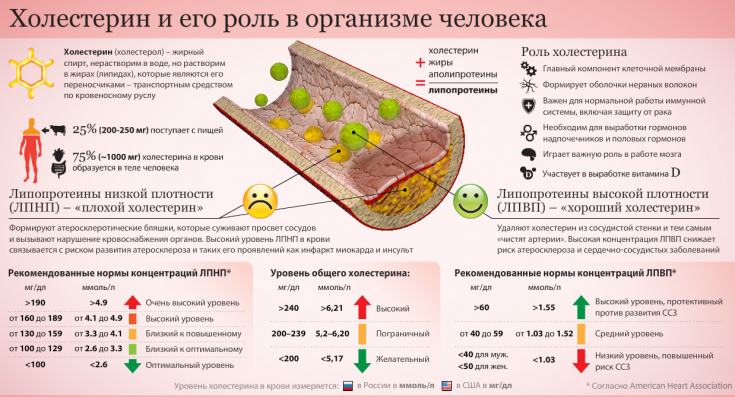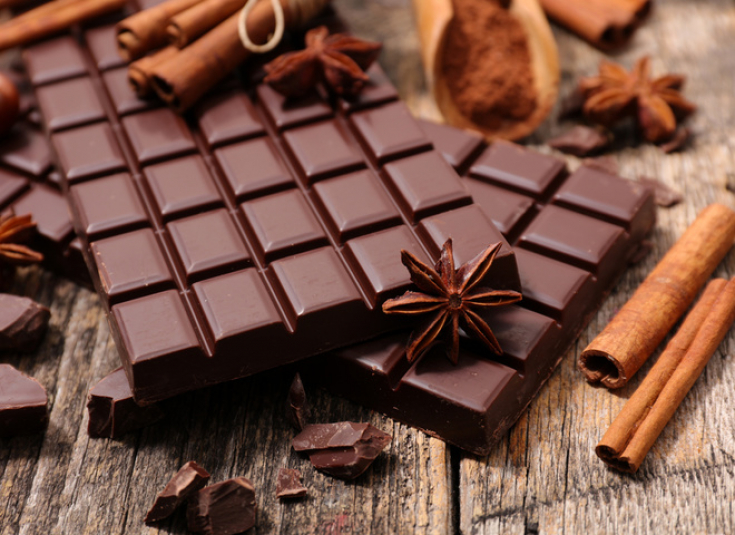Cholesterol levels fluctuate significantly with the season, rising as cold weather approaches and falling again as warmer weather returns. As a consequence, this may put some people with high cholesterol at greater risk of heart disease in winter and early spring.
Early spring – high cholesterol season? The editors of estet-portal.com found an explanation for this fact and ways to improve health.
- Why seasonal fluctuations in cholesterol occur
- How to Naturally Lower Cholesterol in Spring
- Aerobics against
bad cholesterol Why seasonal fluctuations in cholesterol occur
Calendar
early springoften has the same weather conditions as winter. This seasonal period, it would seem, is aimed at recovery, but no - a gloomy cyclone winter can last the whole of March, negatively affecting health.
Subscribe to our page on Cholesteroland triglyceride levels vary significantly throughout the year, which in some cases can lead to a misinterpretation of a person's actual cardiovascular risk. Seasonal fluctuations can play a role and should be of particular concern to those near the upper cholesterol limit as they may be at higher risk.

Studies measuring
cholesterol levelsseasonally show that low-density lipoprotein (LDL) or "bad" cholesterol increased by an average of 7 mg/dl in winter compared to summer. The increase in LDL was more pronounced in women and middle-aged people. Along with environmental changes, each season also brings changes in physical activity and dietary habits that can affect cholesterol levels. For example, in winter and
early springpeople tend to exercise less, consume more calories and fatty foods. Short days result in less sun exposure and, as a result, lower concentrations of vitamin D. Vitamin D has been shown to improve the ratio of bad to good cholesterol. Winter and early spring people are prone to colds and flu, which can affect cholesterol levels.
Subscribe to our page onInstagram! The climate and behavioral changes that follow each season can affect lipid metabolism and even
heart health. How to lower cholesterol naturally in spring
Spring is a time of transition when dark and gloomy days begin to fade and sunlight finally fills our days. This is the perfect time of year to focus on a healthy lifestyle.
We offer a natural approach -
12 foodsthat will help reduce cholesterol:
1. OatsTwo servings of oats may be enough to reduce
LDL cholesterollevels by 5.63% in six weeks. The key is beta-glucan, which is able to absorb LDL cholesterol and remove it from the body.
2. Red wine

Studies say that the precious red grape called Tempranillo is able to act on
cholesteroldue to its high fiber content. A decrease between 9% and 12% of LDL values was found. So one glass a day will be enough in the fight against cholesterol.
3. Fresh salmonOmega-3s can not only prevent heart disease and dementia, but also help absorb the "good"
cholesterolup to 4%. Salmon contributes to the supply of essential fatty acids.
4. BeansHalf a cup of beans in soup will reduce
cholesterolLDL levels by 8%. The fiber richness of this legume can slow down the absorption rate of cholesterol in the body.
5. Walnuts

Nuts are a good alternative for a healthy snack. Consuming 50g per day of whole walnuts six days a week for a month will reduce total
cholesterollevels by 5.4% and LDL by 9.3%. But do not exceed the recommended amount: walnuts are good for the heart, but rich in calories, it is better not to exceed the recommended grams.
6. TeaBlack tea can reduce blood lipids by up to 10% in just three weeks, but it's also important for protecting against heart disease and of course fighting antioxidants.
7. Chocolate

Chocolate, in addition to being a great antioxidant, can increase
HDL cholesterollevels (+24% in twelve weeks due to the consumption of cocoa powder). Obviously, dark chocolate with a high percentage of cocoa - at least 70% - is preferred, as it has three times more antioxidants than milk.
8. MargarinePlant sterols or phytosterols can block the absorption of cholesterol by the human gut, and so if LDL levels are a concern, butter should be ditched in favor of vegetable margarine.
9. SpinachSpinach, like all green leafy vegetables and egg yolks, is definitely rich in lutein, an already valuable substance against macular degeneration, the main cause of blindness. Don't be afraid to splurge on spinach, perhaps as a quick side dish, as the lutein it contains helps detoxify the body of excess cholesterol.
10. AvocadoAvocados are a source of monounsaturated fats that can help our heart get rid of bad cholesterol while increasing
HDL cholesterollevels. However, since this fruit is very rich in calories and fat, it is necessary to observe the consumption in moderation.

The positive discoveries about garlic continue: not only does it regulate blood pressure, it protects against infections, it also prevents blood clots and has been found to lower
cholesterol levels. In fact, garlic is able to make the arteries more elastic and therefore more resistant to cholesterol plaques. The norm is 2-4 cloves of garlic daily.
12. Olive oilThe oil is able to lower LDL and generally reduce body fat due to the monounsaturated fatty acids it contains. Use olive oil in your daily
diet. Aerobics against bad cholesterol
and daily aerobics reduce the level of "bad" blood lipids. Which sport to choose?
It depends on the type of excess fat: to lower LDL, you need 250 to 300 minutes of activity per week to burn at least 2000 calories, the level will drop from 5 to 8% in 12-16 weeks. Triglycerides drop rapidly during physical activity and then rise over the next 48 hours. To reduce them, you should exercise every day, starting with 10-15 minutes. and ending with a duration of 35-40 min.

In general, it is recommended that all healthy people do at least 30 minutes of moderate-intensity physical activity. day at least 5 days a week or at least 25 min. intense exercise per day at least 3 days a week. However, in the case of certain pathologies, both for the cardiovascular system and for other types, it is always advisable to consult a doctor in order to determine the most appropriate physical activity.
To reduce the level of
cholesterol in the springseason you can also do: running, brisk walking, swimming, cycling, spinning. High
cholesterol- a threat to health. The first way to lower it – it is to improve the way of life, thanks to the rejection of a number of bad habits. Physical activity and wholesome healthy eating are allies of cardiovascular health, and spring – great season for his recovery.
More useful information on our channel in




